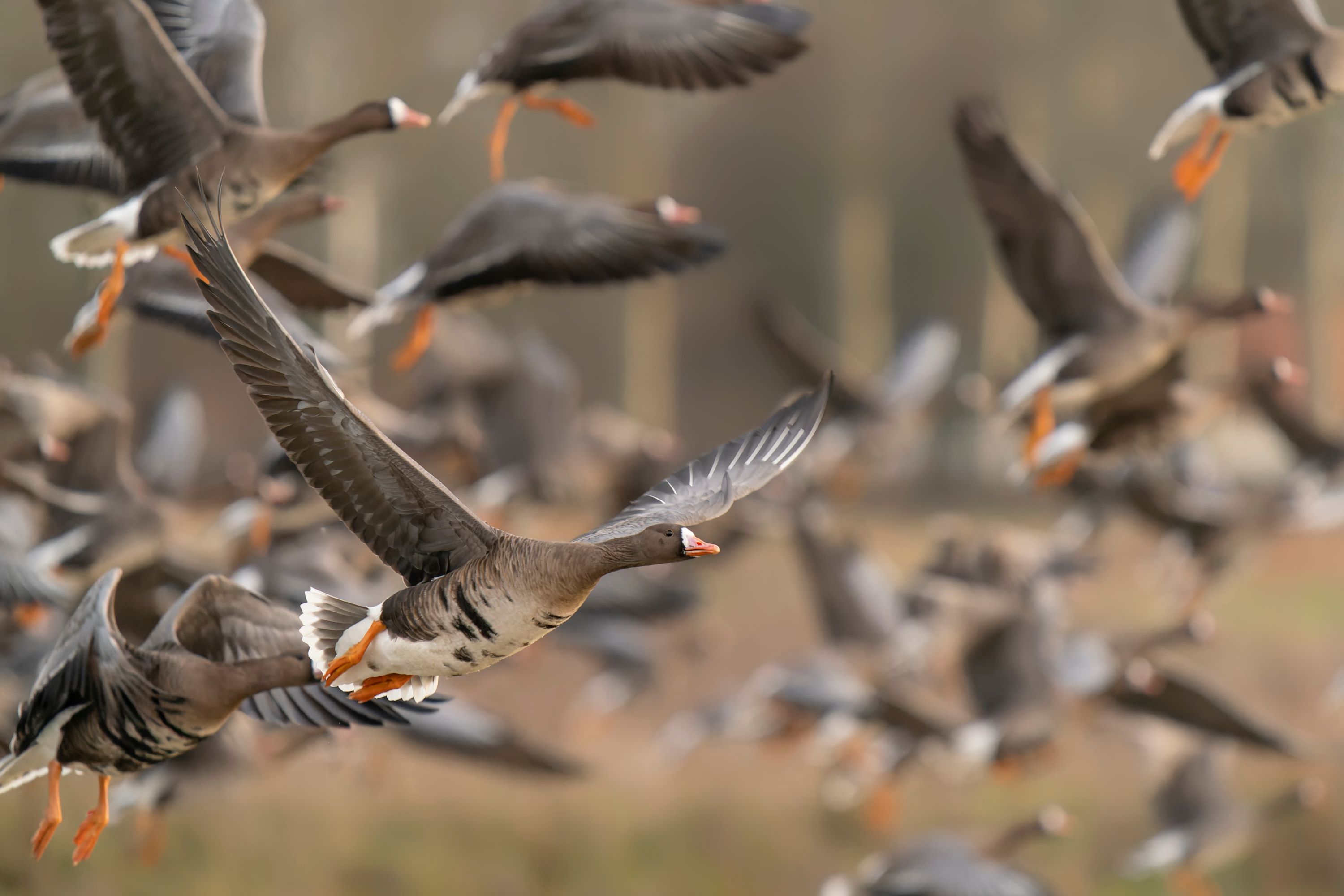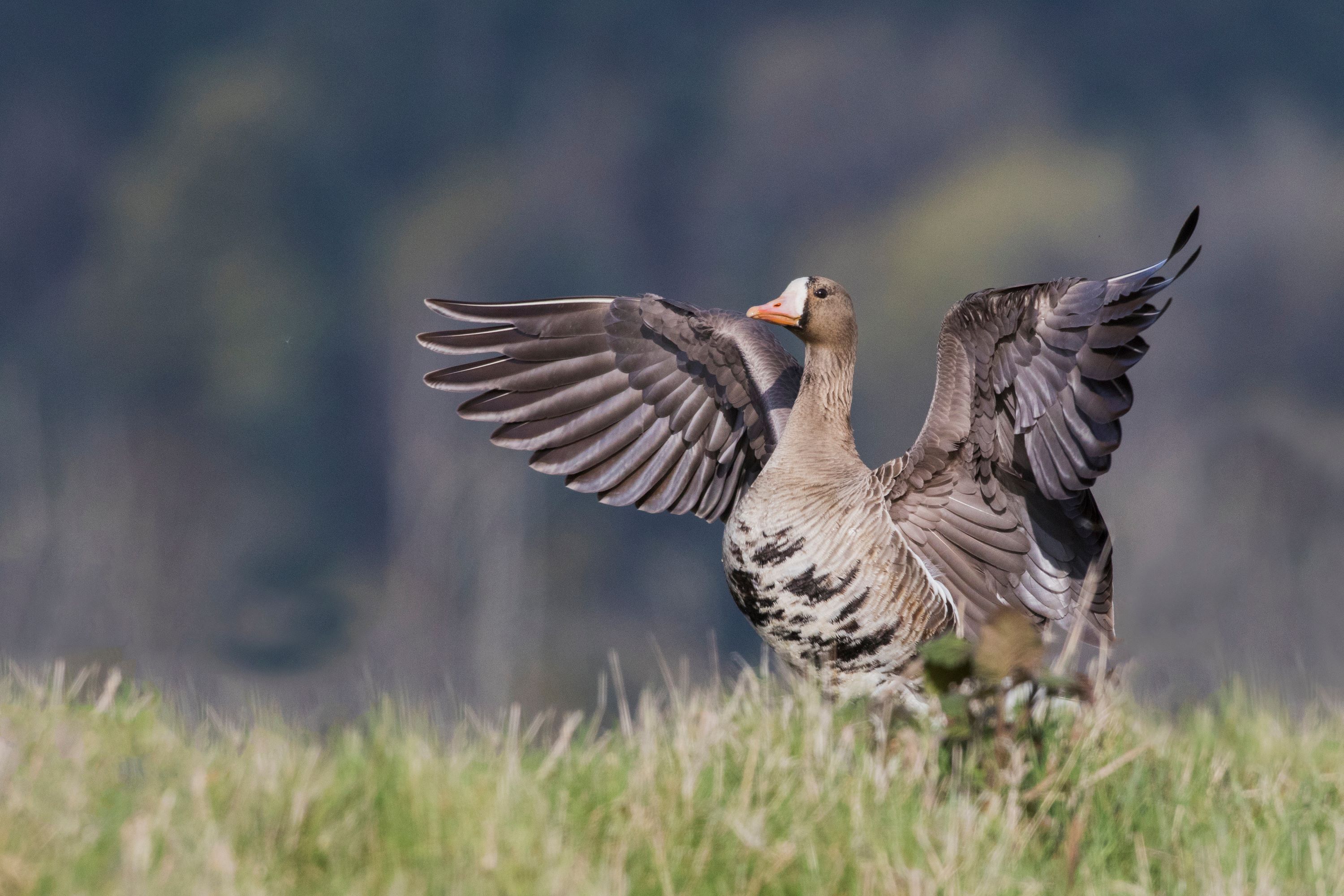
The Greater White-Fronted Goose: A Spectacle of the Skies
Introduction
The Greater White-fronted Goose, known for its distinctive appearance and wide migratory range, is a species that captivates birdwatchers and nature enthusiasts alike. Though not commonly found in Utah, its ecological significance and fascinating behavior make it a species worth learning about.
Description and Identification
The Greater White-fronted Goose, scientifically named 'Anser albifrons', is medium-sized and easily identifiable by its unique markings. It is characterized by a white band at the front of its face, just above the beak, which contrasts sharply with its dark brown body. Its underbelly often displays black barring, and it has orange legs and a pink beak, making it one of the more distinctive geese species.
Habitat and Range
These geese have a broad range that spans across Europe, Asia, and North America. In North America, they are primarily found in the Pacific and Central Flyways, frequenting wetlands, grasslands, and agricultural fields. Their habitat choice is largely influenced by the availability of food, particularly during migration and wintering periods.

Migration Patterns
The Greater White-fronted Goose is known for its long migratory journeys. In North America, these birds breed in the tundra of the Arctic and migrate southward to spend the winter in warmer climates. Their migration is a spectacle in itself, often involving large flocks that form impressive formations in the sky.
Behavior and Diet
These geese are social birds, often seen in large flocks, especially during migration. They are grazers and feed primarily on grasses, grains, and occasionally roots and tubers. During the breeding season in the Arctic, their diet shifts to include more protein-rich foods like insects and small invertebrates, necessary for the development of goslings.
Breeding and Lifespan
Greater White-fronted Geese reach breeding maturity around two to three years of age. They breed in the high Arctic, with females laying 3-5 eggs in a ground nest lined with down. The goslings are precocial, meaning they are relatively mature and mobile from the moment of hatching. These geese can live up to 20 years in the wild, though many face threats from predators and human activities.
Vocalizations
One of the notable characteristics of the Greater White-fronted Goose is its vocalization. They are known for their loud, laughing call, which can be heard over long distances. These calls play a crucial role in communication within flocks, particularly during migratory flights.
Conservation Status
Currently, the Greater White-fronted Goose is not considered a threatened species. However, they do face challenges due to habitat loss and degradation, especially in their breeding and wintering grounds. Conservation efforts are essential to ensure the stability of their populations.
The Greater White-Fronted Goose in Utah
While Utah is not a primary region for the Greater White-fronted Goose, birdwatchers in the state might occasionally spot these birds during migration. Wetlands and agricultural fields in Utah can serve as temporary stopover sites for these migrating geese.
Conclusion
The Greater White-fronted Goose, with its distinctive appearance and remarkable migratory habits, adds to the rich tapestry of avian life. Understanding the behavior and challenges faced by this species not only enhances our knowledge of bird ecology but also highlights the importance of conservation efforts to protect migratory bird species and their habitats. For those in Utah and beyond, the occasional sighting of a Greater White-fronted Goose is a reminder of the interconnectedness of ecosystems and the wonder of nature's migrations.